Flavin nucleotides - Study guides, Class notes & Summaries
Looking for the best study guides, study notes and summaries about Flavin nucleotides? On this page you'll find 45 study documents about Flavin nucleotides.
Page 3 out of 45 results
Sort by

-
Test Bank for Lehninger Principles of Biochemistry 7th Edition by Nelson (complete, questions/answers/rationales)
- Exam (elaborations) • 42 pages • 2023
-
Available in package deal
-
- $14.99
- + learn more
The chirality of an amino acid results from the fact that its α carbon: A) has no net charge. B) is a carboxylic acid. C) is bonded to four different chemical groups. D) is in the L absolute configuration in naturally occurring proteins. E) is symmetric. C) is bonded to four different chemical groups. Of the 20 standard amino acids, only ___________ is not optically active. The reason is that its side chain ___________. A) alanine; is a simple methyl group B) glycine; is a hydrog...
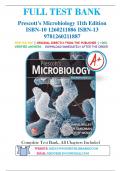
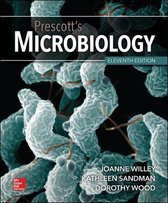
-
Test Bank for Prescott's Microbiology 11th Edition by Joanne Willey, Kathleen Sandman & Dorothy Wood 9781260211887 Chapter 1-43 | Complete Guide A+
- Exam (elaborations) • 1423 pages • 2023
-
- $17.99
- + learn more
Test Bank for Prescott's Microbiology 11th Edition by Joanne Willey, Kathleen Sandman & Dorothy Wood 9781260211887 Chapter 1-43 | Complete Guide A+. Prescott's Microbiology, 11e (Willey) Chapter 1 The Evolution of Microorganisms and Microbiology 1) Extant microorganisms are organisms from the fossil record that are no longer present on Earth today. Answer: FALSE Topic: Taxonomy of Microorganisms Bloom's/Accessibility: 2. Understand / Keyboard Navigation ASM Topic: Module 01 Evolution ASM Obje...
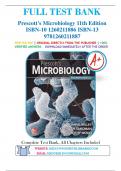
-
Test Bank for Prescott's Microbiology 11th Edition by Joanne Willey, Kathleen Sandman & Dorothy Wood 9781260211887 Chapter 1-43 | Complete Guide A+
- Exam (elaborations) • 1423 pages • 2023
-
- $17.99
- + learn more
Test Bank for Prescott's Microbiology 11th Edition by Joanne Willey, Kathleen Sandman & Dorothy Wood 9781260211887 Chapter 1-43 | Complete Guide A+. Prescott's Microbiology, 11e (Willey) Chapter 1 The Evolution of Microorganisms and Microbiology 1) Extant microorganisms are organisms from the fossil record that are no longer present on Earth today. Answer: FALSE Topic: Taxonomy of Microorganisms Bloom's/Accessibility: 2. Understand / Keyboard Navigation ASM Topic: Module 01 Evolution ASM Obje...


-
Test Bank For Prescotts Microbiology 11th Edition By Willey Chapter 1-43 |Complete Guide A+
- Exam (elaborations) • 1422 pages • 2023
-
- $17.99
- + learn more
Prescott's Microbiology, 11e (Willey) Chapter 1 The Evolution of Microorganisms and Microbiology 1) Extant microorganisms are organisms from the fossil record that are no longer present on Earth today. Answer: FALSE Topic: Taxonomy of Microorganisms Bloom's/Accessibility: 2. Understand / Keyboard Navigation ASM Topic: Module 01 Evolution ASM Objective: 01.05 The evolutionary relatedness of organisms is best reflected in phylogenetic trees. Learning Outcome: 01.02a Propose a timeline of the ori...
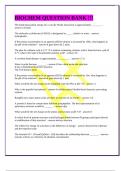
-
biochem question bank !!!
- Exam (elaborations) • 18 pages • 2024
-
- $11.49
- + learn more
The bond dissociation energy for a van der Waals interaction is approximately ________. - answer-2 kJ/mol The molecule cyclohexane (C6H12) is designated as _____ relative to water. - answer-hydrophobic If the proton concentration in an aqueous (H2O) solution is increased by 100x, what happens to the pH of the solution? - answer-It goes down by 2 units. The pKa for carbonic acid is 3.77. If a solution containing carbonic acid is found to have a pH of 4.77, what is the ratio of bicarbonat...

-
Test Bank For Prescotts Microbiology 11th Edition By Willey Chapter 1-43 |Complete Guide A+
- Exam (elaborations) • 1422 pages • 2023
-
- $18.49
- + learn more
Prescott's Microbiology, 11e (Willey) Chapter 1 The Evolution of Microorganisms and Microbiology 1) Extant microorganisms are organisms from the fossil record that are no longer present on Earth today. Answer: FALSE Topic: Taxonomy of Microorganisms Bloom's/Accessibility: 2. Understand / Keyboard Navigation ASM Topic: Module 01 Evolution ASM Objective: 01.05 The evolutionary relatedness of organisms is best reflected in phylogenetic trees. Learning Outcome: 01.02a Propose a timeline of the ori...
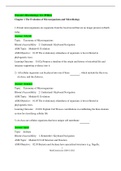

-
Test Bank For Prescotts Microbiology 11th Edition by Joanne Willey, Kathleen Sandman, Dorothy Wood Chapter 1-43 |Complete Guide A+
- Exam (elaborations) • 1422 pages • 2022
-
- $19.99
- + learn more
Prescott's Microbiology, 11e (Willey) Chapter 1 The Evolution of Microorganisms and Microbiology 1) Extant microorganisms are organisms from the fossil record that are no longer present on Earth today. Answer: FALSE Topic: Taxonomy of Microorganisms Bloom's/Accessibility: 2. Understand / Keyboard Navigation ASM Topic: Module 01 Evolution ASM Objective: 01.05 The evolutionary relatedness of organisms is best reflected in phylogenetic trees. Learning Outcome: 01.02a Propose a timeline of the ori...

-
Biochemistry - Exam 1 Practice Questions and Answers 2022
- Exam (elaborations) • 10 pages • 2022
-
Available in package deal
-
- $13.99
- + learn more
In a bacterial cell, the DNA is in the: A) cell envelope. B) cell membrane. C) nucleoid. D) nucleus. E) ribosomes. nucleoid A major change occurring in the evolution of eukaryotes from prokaryotes was the development of: A) DNA. B) photosynthetic capability. C) plasma membranes. D) ribosomes. E) the nucleus the nucleus 00:34 01:10 In eukaryotes, the nucleus is enclosed by a double membrane called the: A) cell membrane. B) nuclear envelope. C) nucleolus. D) nuc...
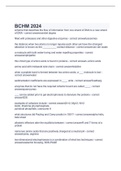
-
BCHM 2023 with verified questions and answers
- Exam (elaborations) • 9 pages • 2023
-
Available in package deal
-
- $12.99
- + learn more
scheme that describes the flow of information from one strand of DNA to a new strand of DNA central dogma filled with proteases and other digestive enzymes lysosomes the distance when two atoms no longer repulse each other yet have the strongest attraction is known as the __________ contact distance van der waals a molecule with both water-loving and water repelling properties amphipathic this chiral type of amino acids is found in proteins L-amino acids ...
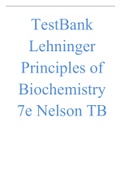
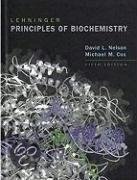
-
TestBank Lehninger Principles of Biochemistry 7e Nelson TB
- Exam (elaborations) • 560 pages • 2022
-
- $16.00
- + learn more
TestBank Lehninger Principles of Biochemistry 7e Nelson TB TestBank Lehninger Principles of Biochemistry 7e Nelson TBPage 1 1. In a bacterial cell, the DNA is in the: A) cell envelope. B) cell membrane. C) nucleoid. D) nucleus. E) ribosomes. 2. A major change occurring in the evolution of eukaryotes from prokaryotes was the development of: A) DNA. B) photosynthetic capability. C) plasma membranes. D) ribosomes. E) the nucleus. 3. In eukaryotes, the nucleus is enclosed by a d...

How much did you already spend on Stuvia? Imagine there are plenty more of you out there paying for study notes, but this time YOU are the seller. Ka-ching! Discover all about earning on Stuvia


